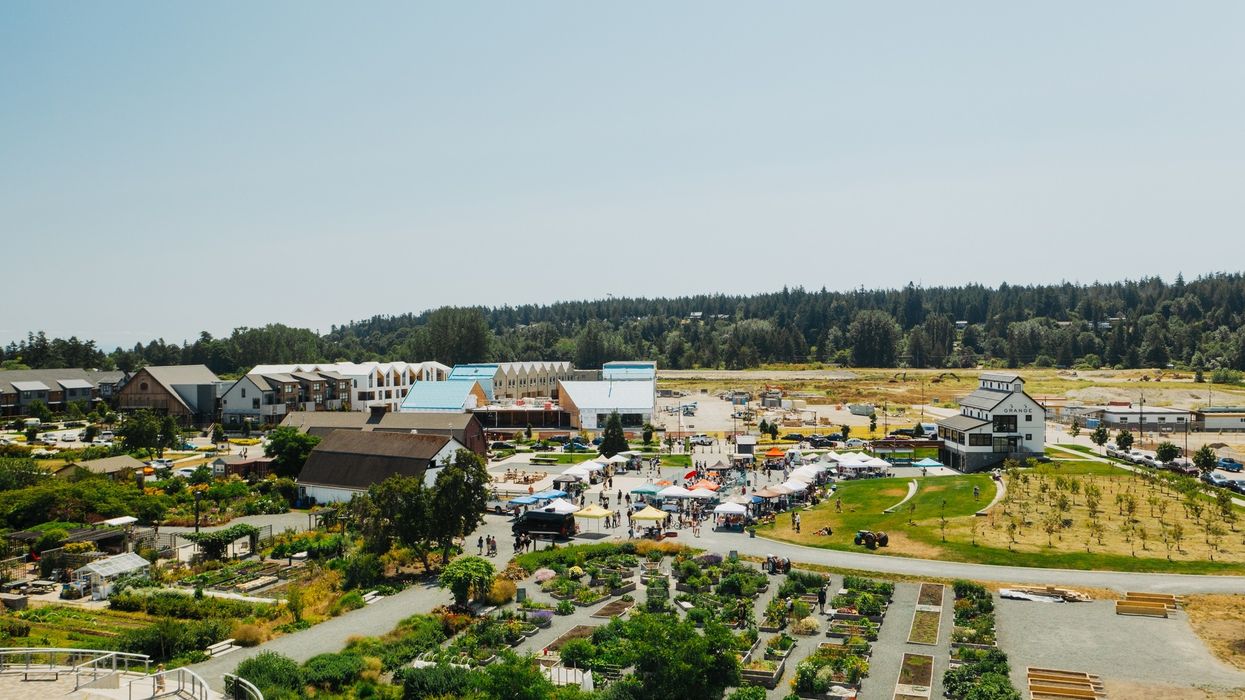This article was submitted by Bob Ransford, Vice President of Development at Century Group.
Most North American cities today are struggling to meet the demand for housing as the realities of demographics, economics and global population trends converge in a now mostly urban world. Debates rage in many cities about how to achieve greater land use efficiency, mostly focused in inner-city neighbourhoods and the first-ring suburban areas around them.
What we haven’t heard a lot of talk about are the opportunities that exist beyond those first-ring suburbs, further out at the urban metropolitan edge, to repair bad urbanism, create more and diverse housing supply while at the same time reinvigorating local, humans-scale agricultural production to advance food security and reconnect people with a culture that celebrates food and agriculture as social activators.
These are the fundamentals of a planning theory now in practice called “Agricultural Urbanism” that is based on organically containing urban sprawl beyond the current metropolitan edge in a real way by reconnecting communities to growing food locally. This planning theory started emerging nearly 30 years ago in response to the threat of continued urban sprawl that often consumes agriculturally viable land. Continued sprawl is the response to the type of urbanism that typically exists at the extremities of metropolitan regions that have grown up in areas where farming once took place.
Residential neighbourhoods that exist at the urban/rural edge today usually have low-density settlement patterns consisting of large residential lots with expensive single-detached homes located some distance from shops, commercial services and workplaces. Their residents are very automobile-dependent. If any farming is taking place next to these neighbourhoods on the other side of an arbitrary growth containment boundary, it is often on land owned by speculators who hope that one day their property will be the next land that can be developed when political pressure is successful in erasing or moving growth containment boundaries.
Often, the land is being farmed by tenant farmers with short-term tenure which makes it difficult for them to invest in proper soil management and infrastructure. They might grow one or two varieties of commodity crops at an industrial scale that can be easily managed and harvested mechanically. This type of farming rarely produces crops sold directly to consumers. Often residents living next to this type of farming turn their backs to it with deep yards surrounded by high fences. Farming is anything but part of the neighbourhood’s character or the local area's culture.
The planning theory of Agricultural Urbanism emerged in response to this and is based on trading economic value across that line between the suburban edge and the rural agricultural edge. Southlands in the Tsawwassen community in the Vancouver suburban city of Delta, British Columbia was the birthplace of Agricultural Urbanism about 20 years ago.
Southlands is an agrihood developed on 535 acres of land that remained from a generations-old dairy and potato farm that had previously been the subject of an attempt to develop nearly all of the site with about 2,000 homes almost two decades before when the land was removed from British Columbia’s Agricultural Land Reserve.
I worked with Century Group, a Tsawwassen local property developer – the subsequent owners of the land – for nearly a decade and a half on a planning process that commenced in 2004, actively engaging local citizens, to develop a plan that would preserve and activate the majority of the land for farming while developing a complete community planned around the principles of the New Urbanism. The eventual plan that was approved saw 80% of the land being transferred to public ownership by the City government, to be made available to farmers, and returned to the protection of Agricultural Land Reserve.
The remaining approximately 110 acres are now the site of a walkable, mixed-use community set within the farm setting with entitlements to develop up to 950 dwellings and 80,000 square feet of commercial/retail space. A variety of housing forms have already been developed, from small detached cottages in pocket neighbourhoods, to typical small lot single-family homes to stacked townhouses and apartment flats in three storey multi-family buildings.
Southlands is an example of how the ethos of Agricultural Urbanism can be successfully applied at the urban edge to make local agriculture relevant in an urban context and function, in effect, to contain urban growth.





















